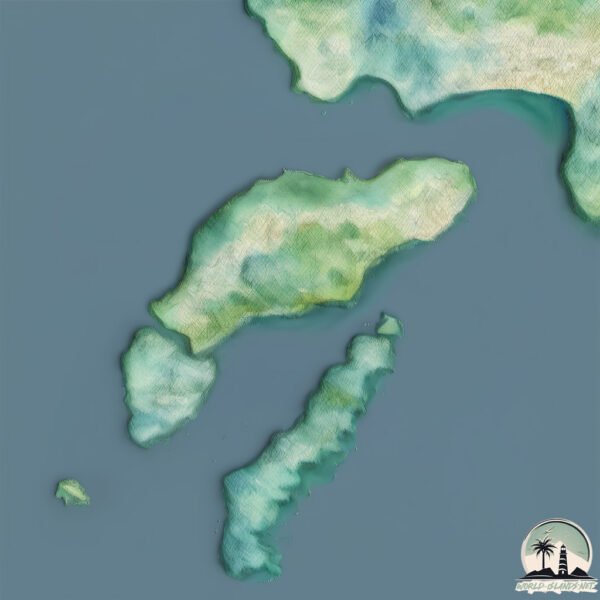Nisí Kálamos

Welcome to Nisí Kálamos, a Temperate island in the Ionian Sea, part of the majestic Atlantic Ocean. This guide offers a comprehensive overview of what makes Nisí Kálamos unique – from its geography and climate to its population, infrastructure, and beyond. Dive into the details:
- Geography and Size: Explore the island’s size and location.
- Climate and Weather: Weather patterns and temperature.
- Topography and Nature: Uncover the natural wonders of the island.
- Infrastructure and Travelling: Insights on reaching, staying, and making the most of your visit.
- News and Headlines: Latest News.
Geography and size of Nisí Kálamos
Size: 25.3 km²
Coastline: 31 km
Ocean: Atlantic Ocean
Sea: Ionian Sea
Continent: Europe
Nisí Kálamos is a Medium Island spanning 25 km² with a coastline of 31 km.
Archipel: Mediterranean islands – Encompassing numerous islands in the Mediterranean Sea, each with its own unique culture, history, and natural beauty, from the Balearics to the Greek islands.
Tectonic Plate: Aegean Sea – Located in the eastern Mediterranean, this microplate is characterized by seismic and volcanic activity due to its interaction with the Eurasian and African Plates.
The geographic heart of the island is pinpointed at these coordinates:
Latitude: 38.6245576 / Longitude: 20.9105924
Climate and weather of Nisí Kálamos
Climate Zone: Temperate
Climate Details: Hot-Summer Mediterranean Climate
Temperature: Hot Summer
Climate Characteristics: Characterized by hot, dry summers and mild, wet winters, typical of coastal areas with abundant sunshine.
Topography and nature of Nisí Kálamos
Timezone: UTC+02:00
Timezone places: Europe/Mariehamn
Max. Elevation: 611 m
Mean Elevation: 214 m
Vegetation: Evergreen Needleleaf Forest
Tree Coverage: 44%
The mean elevation is 214 m. The highest elevation on the island reaches approximately 611 meters above sea level. The island is characterized by Plateau: Elevated flatlands rising sharply above the surrounding area, with a maximum elevation over 500 meters but a mean elevation less than 300 meters, forming unique highland areas on islands.
Dominating Vegetation: Evergreen Needleleaf Forest
Dominated by evergreen coniferous trees such as pines and firs, which retain their needle-like leaves throughout the year. These forests are often found in cooler climates. Nisí Kálamos has a tree cover of 44 %.
Vegetation: 10 vegetation zones – Very Highly Diverse Island
Islands in this range are ecological powerhouses, showcasing a wide array of vegetation zones. Each zone, from lush rainforests to arid scrublands, coastal mangroves to mountainous regions, contributes to a complex and interdependent ecosystem. These islands are often hotspots of biodiversity, supporting numerous species and intricate ecological processes.
Infrastructure and Travelling to Nisí Kálamos
Does the island have a public airport? no.
There is no public and scheduled airport on Nisí Kálamos. The nearest airport is Aktion National Airport, located 35 km away.
Does the island have a major port? no.
There are no major ports on Nisí Kálamos. The closest major port is ASTAKOS, approximately 23 km away.
The mean population of Nisí Kálamos is 19 per km². Nisí Kálamos is Gently Populated. The island belongs to Greece.
Continuing your journey, Nisída Meganísi is the next notable island, situated merely km away.
Greece is classified as Developed region: nonG7: Developed economies outside of the Group of Seven, characterized by high income and advanced economic structures. The level of income is High income: OECD.
News – Latest Updates and Headlines from Nisí Kálamos
Stay informed with the most recent news and important headlines from Nisí Kálamos. Here’s a roundup of the latest developments.
Please note: The data used here has been primarily extracted from satellite readings. Deviations from exact values may occur, particularly regarding the height of elevations and population density. Land area and coastline measurements refer to average values at mean high tide.
